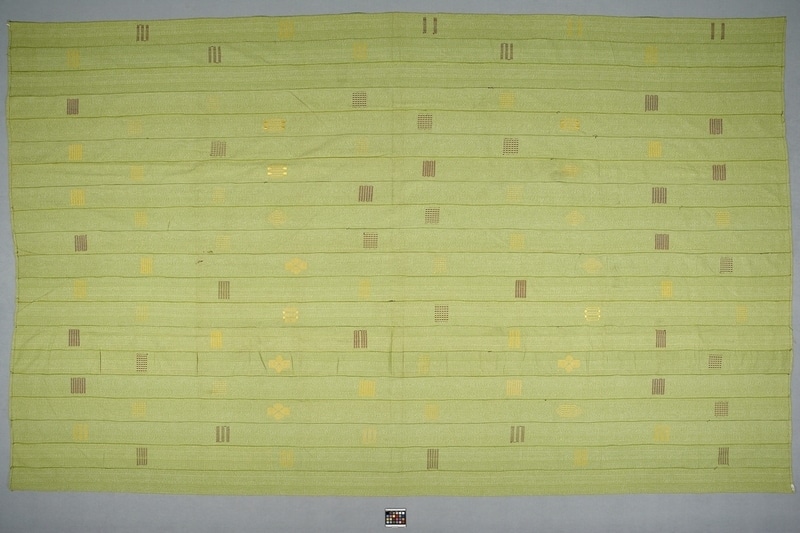Textile Item Number: Af490 from the MOA: University of British Columbia

Description
Large rectangular piece of fabric made from narrow strips of woven cotton sewn together; white or natural cotton weft with green warp. Two sided supplementary weft patterning in yellow concentric squares, yellow rectangles, complex yellow pattern with stripes and joined hexagons, and red regular rectangles, at regular intervals of 50 to 55 cm. along the strips. Both ends hemmed; edges finished. Typical strip width: 9-10 cm.
History Of Use
West African narrow strip weaving must have begun by the 10th century. Similar examples from the 13th century exist. The tradition may have originated in Arabic North Africa, Egypt, or the Near East, but no definitive answer has been found. Strips are made by men only, typically in 8 to 15 cm. widths, on a variety of loom types. They are sewn together to make material used for garments and other fabric products.
Narrative
Bought on independence day in Ghana (collector's notes).
Item History
- Made in Accra, Ghana
- Collected during 1957
- Owned by Albert C. Cooke before November 2, 1978
- Received from Albert C. Cooke (Donor) on November 2, 1978
What
- Name
- Textile
- Identification Number
- Af490
- Type of Item
- textile
- Material
- cotton fibre and dye
- Manufacturing Technique
- woven, dyed and machine sewn
- Overall
- height 200.0 cm, width 324.0 cm
Who
- Culture
- Ghanaian
- Previous Owner
- Albert C. Cooke
- Received from
- Albert C. Cooke (Donor)
Where
- Holding Institution
- MOA: University of British Columbia
- Made in
- Accra, Ghana
When
- Collection Date
- during 1957
- Ownership Date
- before November 2, 1978
- Acquisition Date
- on November 2, 1978
Other
- Item Classes
- textiles
- Condition
- good
- Accession Number
- 0495/0006